Why Should I Learn to Play the Tin Whistle?
Ever thought about playing an instrument? Sure, there are common-place instruments such as the piano, guitar, drums and vocals… but why not look at something a little different such as the Tin Whistle? The tin whistle is a woodwind instrument, containing six holes and is relatively easy to play. It is often heard in celtic and folk music. If this instrument sounds like it’s for you, here’s how you can get started in this post.
Choosing the Correct Tin Whistle
Make sure you have a tin whistle tuned in the key of D, (your tin whistle should have the letter D written on it). This is the most common type of tin whistle. If you are unsure about whether your whistle is tuned to D, check with the staff at your local music store.
How to Hold The Tin Whistle
There are six holes on the tin whistle. The first three fingers of each hand are used to cover the holes. The little fingers are not used by either hand. Different notes are produced by covering various combinations of these holes as you blow through the instrument. The following photo demonstrates the basic playing position. Notice that the left hand is above the right.
Understanding the Tin Whistle Diagrams
The numbers on the fingers show which fingers should be used to cover the holes as demonstrated in the previous photo.
The following photo shows a B note. This is produced by covering the top hole with the first finger of your left hand. In the photo this is indicated by a white number inside a red circle, covering the hole. The notation for this note is shown further below.
Playing Your First Note on the Tin Whistle
The first note you will learn to play is the B note, shown above. Place your fingers in position to play the note and put the tip of the mouthpiece into your mouth. Use your lips to seal off any air from escaping out the sides of your mouth and blow smoothly and steadily into the tin whistle. Don’t blow too hard or start the note too suddenly, or you may cause the note to sound at the wrong pitch or cause the instrument to squeak.
Tonguing
To control the beginning and end of a note, the technique of tonguing is used. To prepare for this technique whisper the sound “taa”. The sound begins with your tongue sitting behind your top teeth, blocking the passage of air, and you make the “taa” sound by quickly withdrawing it, letting a stream of air begin from your outgoing breath.
The next step is to practice this with the tin whistle in position to play a B note, with your tongue lightly on the hole in the mouthpiece. As you withdraw your tongue, the note will have a well articulated beginning. The “t” part of the sound gives the note a definite starting point, and the “aa” part of the sound keeps your throat open so that the flow of air remains constant and the note sounds even. To end the note, you put your tongue back on the mouthpiece rather than stopping your breath. This will end the note as crisply as it started. It is worth practicing the tonguing technique many times on a single note until you are comfortable with it.
Breathing technique When Playing the Tin Whistle
When learning any wind instrument, it is important to learn how to take a new breath without losing your timing. Breath marks are indicated in the following exercise by the large comma-shaped symbol. Take a quick, deep breath, and be careful not to lose your timing when you breathe. Counting as you play should help you become more confident with this. The correct breathing technique is discussed in detail in Lesson 6 of our Progressive Tin Whistle book.
If you look at the following example, you will notice a line of letters and symbols above the staff (Em, B7, Em, etc.) These are chord symbols which indicate the harmony to be played by accompanying instruments such as keyboard or guitar. The chord symbols do not affect the notes you play on the tin whistle. You will also notice the counting numbers underneath the staff. The bigger bold numbers tell you to play a note and the smaller numbers tell you to sustain it until the next note.
Listen to this audio example to hear how the exercise above should be played. Once you’re confident, try playing along with the backing track supplied beneath it.
Audio – Full Mix
Audio – Backing Mix
We hope you have enjoyed this short introduction to the tin whistle. Wishing you well, whichever instrument you should choose to learn!
Who is LearnToPlayMusic.com
LearnToPlayMusic.com is the world’s leading music education innovator and publisher of print, eBooks, apps and online lessons.
– Continue learning with Learn To Play Music at LearnToPlayMusic.com












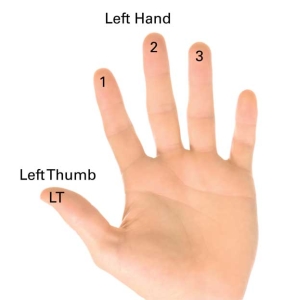
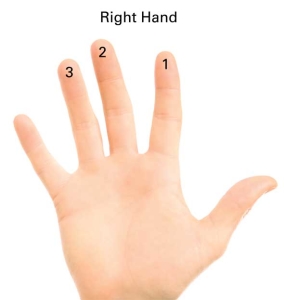
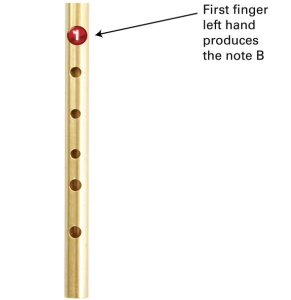
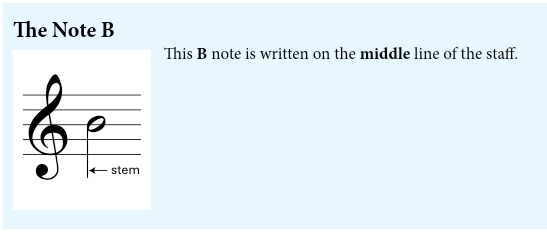
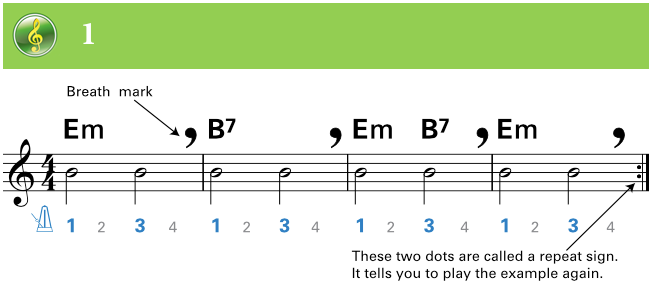













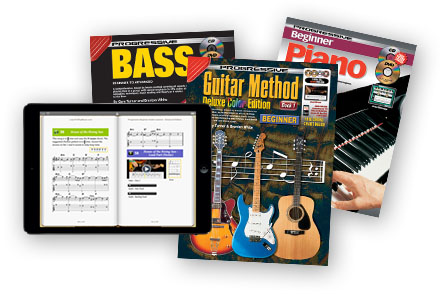






Hi there, I am interested in learning to play the tin whistle and getting your book for learners. You say that it should be a whistle in the key of D. How would one be able to play the whistle in other keys?
Hi Shaun, if you are interested in playing Irish and Scottish music then the key of D is the most common. Once you can play a whistle in 1 key, you can certainly play them in any key – the technique is exactly the same for all. Hope this helps?